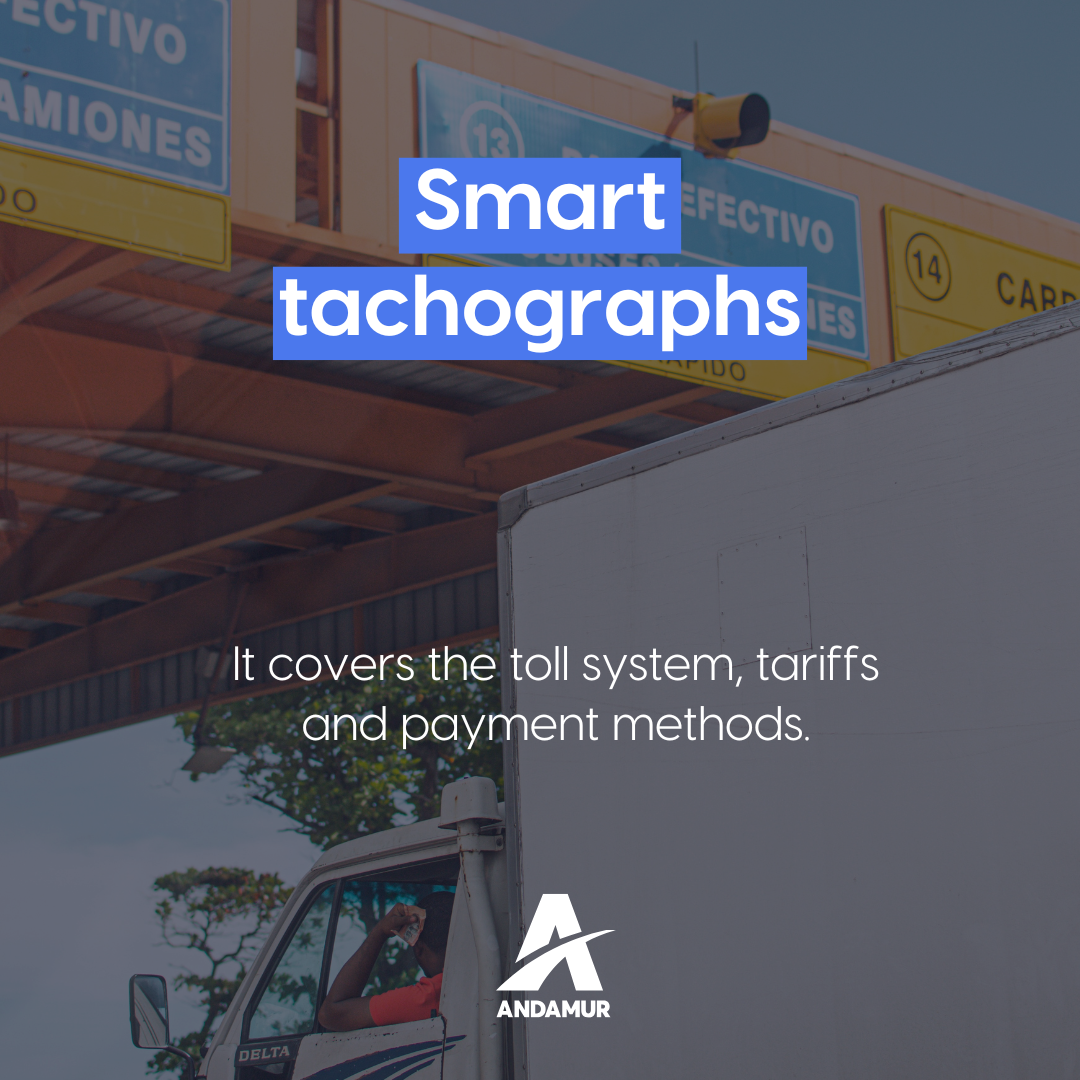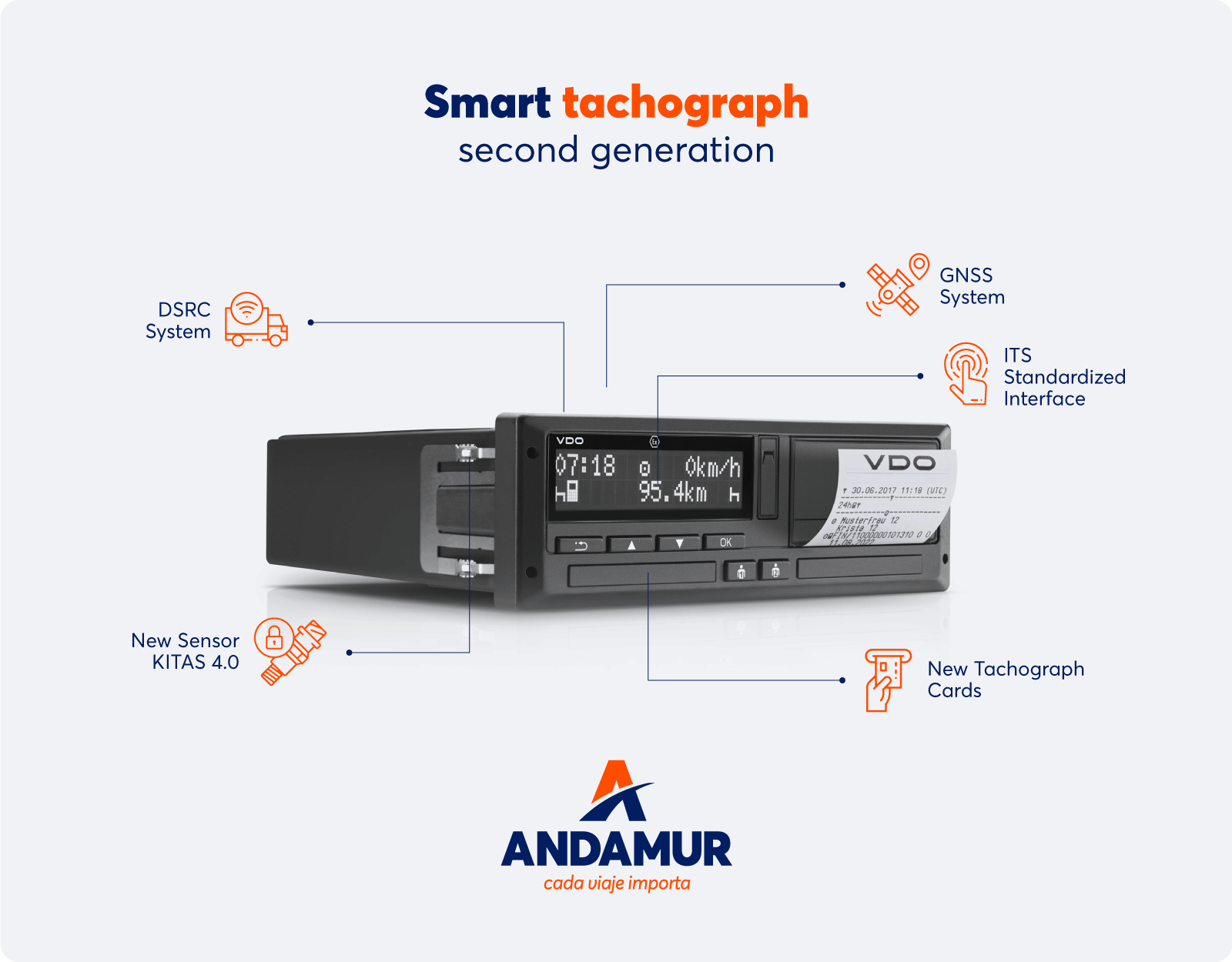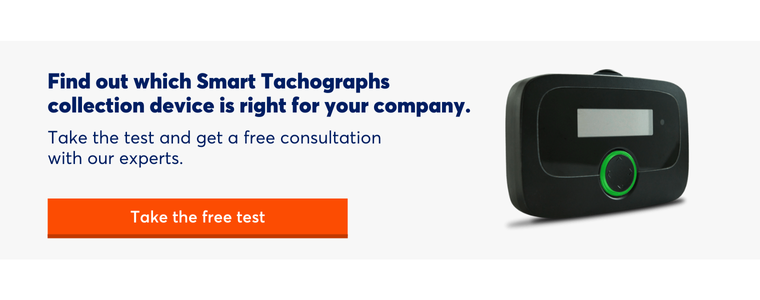 Smart tachographs in trucks: Progress and obligations
Smart tachographs in trucks: Progress and obligations
Tachographs are an essential component for the transportation sector, and their importance has increased with the implementation of the smart tachographs. In this article, we will explore in detail what they are, how they work, and what the obligations associated with these devices are. Join us on this journey through the technology that is revolutionizing freight transportation!
What is a truck tachograph and how does it work?
And truck tachograph It is a device used to record data related to the march, speed and distance traveled by a freight vehicle. This instrument is essential to control the driving and rest times of professional truck drivers, guaranteeing both his security like that of the roads. Historically, there were two types of tachographs: analog and digital.
Truck tachographs are typically equipped with speed sensors and, in some cases, global positioning systems (GPS) to track vehicle location. Each truck driver has his own ID card, which must be inserted into the tachograph at the beginning of your shift. In addition, tachographs store the collected data for several months and print detailed reports on the activity of the driver and the vehicle, contributing to the verification of compliance with obligations

Digital tachographs in trucks
The digital tachograph became mandatory on heavy vehicles in 2006, improving accuracy and data recording. However, the picture is changing with the introduction of the second-generation smart tachograph. This device represents a significant advance, with a series of benefits for drivers and authorities.
The smart tachograph capabilities They are impressive. This device will record the start location of daily work, border crossings, loading and unloading operations, and much more. The transformation of this data into reliable and secure information will be key to the creation of “microservices” that will optimize the work of fleet operators and service providers.
In addition to the digital tachograph, another essential element that must be present in the cabin of a truck is the electronic toll device, which plays a crucial role in efficient toll management and route optimization. In Let’s go We suggest that you take our free test to guarantee that you find the best electronic toll device for your company.
Implementation of the second generation smart tachograph in trucks: what does it offer?
He European Union Mobility Package, approved in August 2023, establishes a transition period towards implementation of second generation smart tachographs. From July 2026, all vehicles weighing more than 3.5 tons must be equipped with these devices. It will also be necessary for light and heavy vehicles carrying out international transport from 2026.
The EU Mobility Package seeks to ensure a fair competition in the European market. In this context, the smart tachograph will play a key role, providing satellite location and integrated maps to record border crossings. This will allow more effective control of the applicable regulations, both for vehicles and drivers.
Key dates for the implementation of smart tachographs in trucks
- From August 2023: All new vehicles weighing less than 3.5 tons must be equipped with the second generation of smart tachographs.
- Before the end of 2024: Old analog or digital tachographs must be replaced in vehicles weighing more than 3.5 tons used in international traffic.
- Before September 2025: Vehicles with a maximum weight of 3.5 tons intended for international transport must be equipped with a second-generation intelligent tachograph.
- Before July 2026: Vans with a maximum weight between 2.5 and 3.5 tons used in international transport must also have the second generation of smart tachographs.
Smart tachographs: Technology for a competitive future
He second generation intelligent tachograph It will not only control driving and rest times, but also new activities such as cabotage, loading and unloading, and movement of workers. In addition, it will incorporate a GNSS positioning module with advanced security functions and a DSRC module to improve road control, which not only will increase road safety and efficiency, but also will contribute to fuel saving, an essential aspect in fleet and vehicle management.
Technology companies have a limited term to develop and test this technology, since from August 2023, all new vehicles over 3.5 tons Those registering in the European Union must have it installed. The second generation smart tachograph is a tool to improve the working conditions of drivers and ensure fair competition between countries. In summary, the era of smart tachographs is underway, with the promise of safer, more efficient and regulated transportation. Technology is transforming the transportation sector, and drivers and companies must be prepared to adapt to these changes on the path to a competitive and sustainable future.





